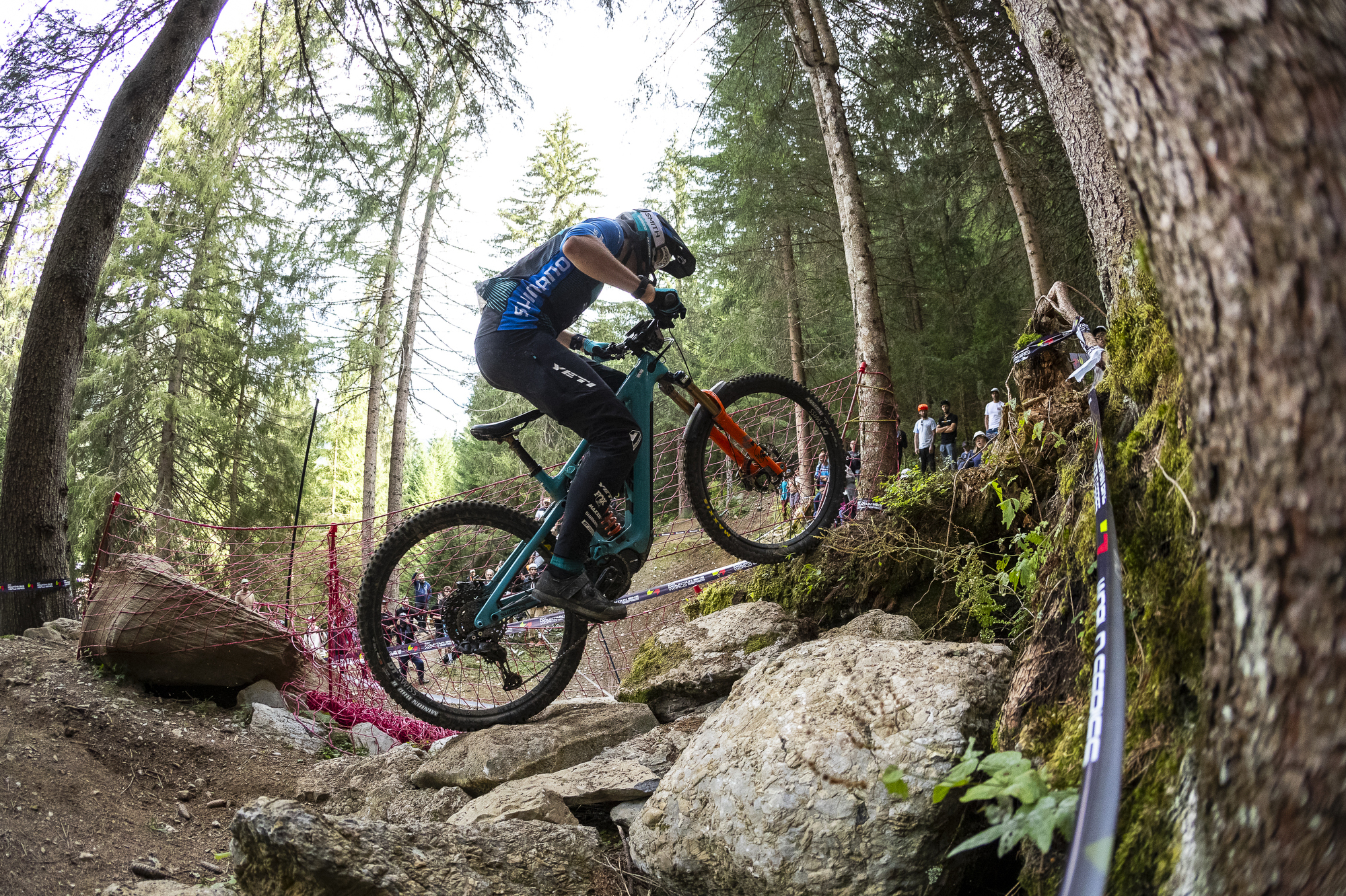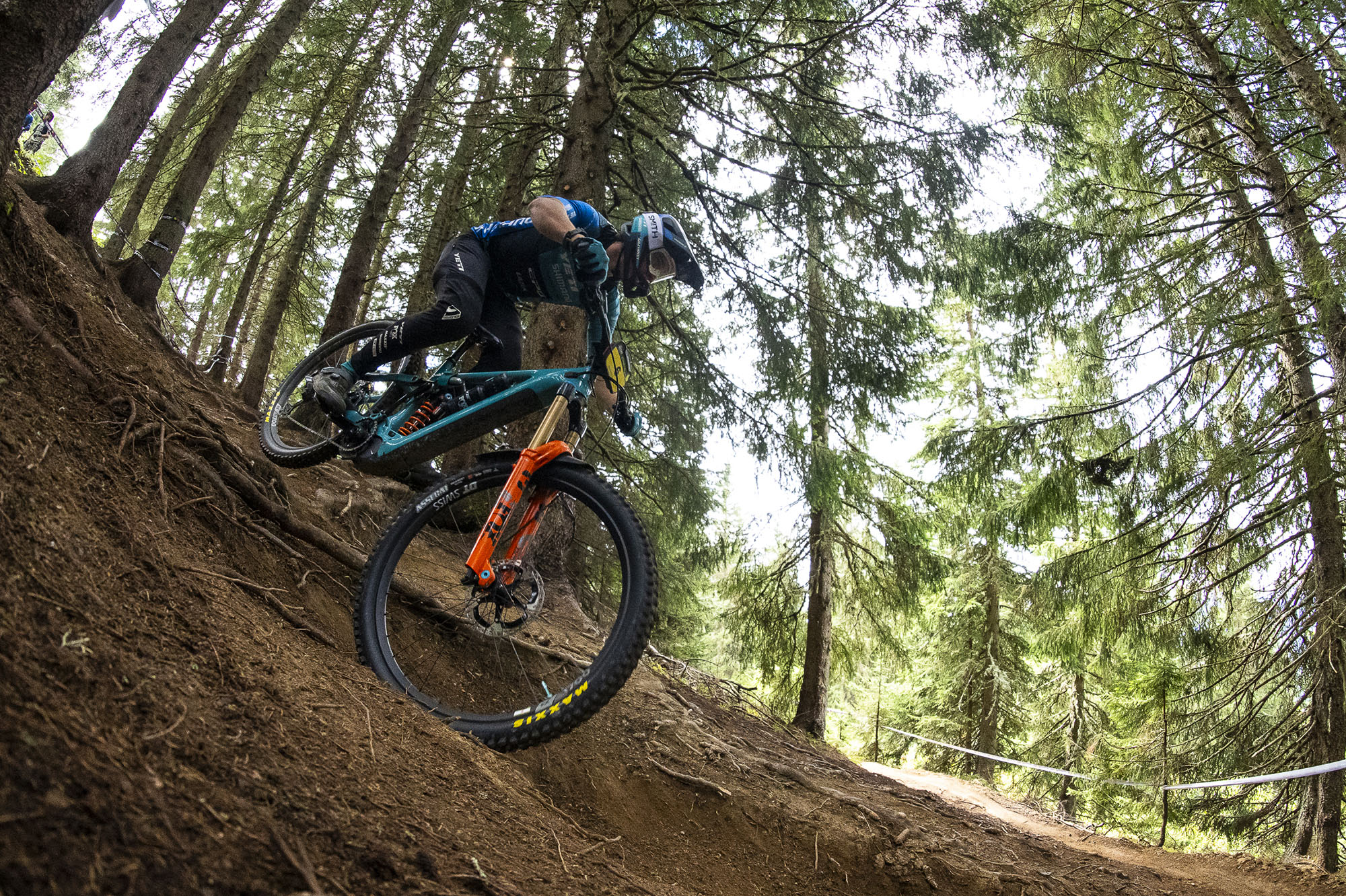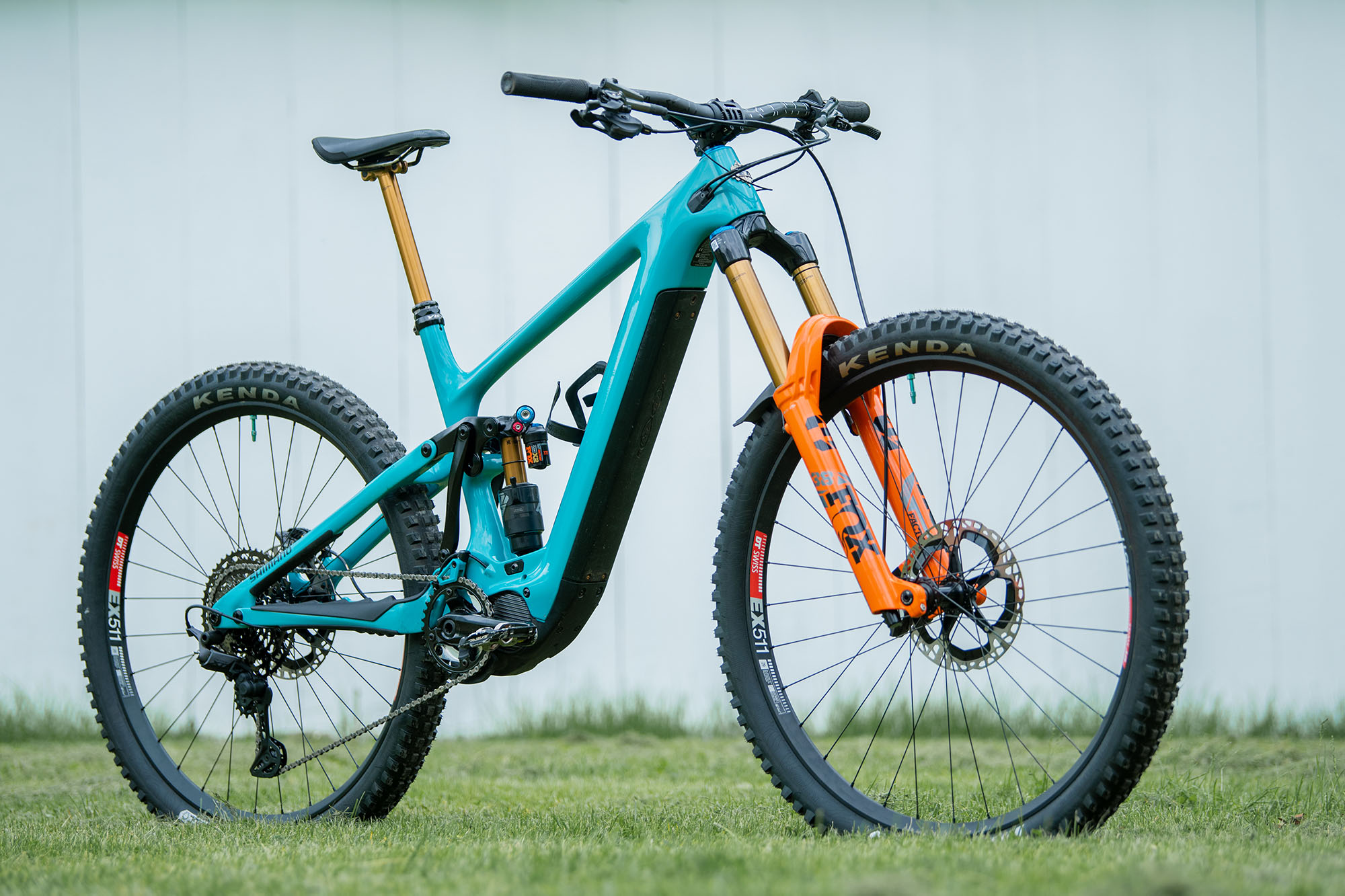Our favourite Pump Track wizard is no one-trick pony and is racing anything and everything that rolls as of late! Ryan Gilchrist took some time out to chat and give us some exclusive insights into his EDR race bike and how he sets that insane looking rig up.
Age: 21
Hometown: Coffs Harbour NSW
Favourite local trails: Cows with Guns
Sponsors: Yeti Shimano EP racing
Social media handles: @ryangilchrist73
First up, you joined the Shimano / Yeti Factory team at the beginning of 2023 with the main focus of contesting the EDR-e (formally the EWS-e series and now the World Cup series for e-Bike racing which is as big as the sport gets!) that must have been an enormous challenge for you to prepare for given that we hadn’t seen much of you on an e-Bike up to that point?
Ryan: It was a daunting adjustment at the start of the year but it turned out to run a lot smoother than expected. Having Jared Graves coaching me and Mick Hannah as a team mate made picking up on the important elements of e-Racing easier than expected. Descending the e-Bike is largely the same as regular enduro so I was up to speed there, and I managed to apply the climbing skill I had from an upbringing in XC to e-Bikes and I was ready to go!
Where do you even begin when it comes to training and preparing yourself to race those events? Did you have to practise swapping out batteries on the fly and weird stuff like that? It must be a very different ‘kettle of fish’ compared to racing a regular enduro?
I learned as I went. I knew there was so much to learn and adjust to so (as per Mick’s directions) I went with the flow and picked stuff up super quick. I went to the first testing camp in California and had no idea how the bike even worked. Thankfully a dedicated team of Shimano engineers (North American and Japanese) made me feel right at home and I was on the same page about the bike in no time.

For anyone reading this that might not know how a typical EDR-e race works could you give us a quick overview of the format and stages and what’s involved for you guys out there doing battle?
It’s pretty much the same as a regular enduro race with some key differences. First of all is the power stage. It’s an uphill, technical and often horribly physical stage. It’s usually up to a minute long and consists of tight corners, trials moves and borderline unrideable features. Wins on these stages are highly sought after for the motor manufacturers, but at the end of the day, they’re just another stage in the race and the race is rarely won or lost on these stages in 2023. The other key difference is that you have a motor between your legs. You burn the same amount of calories in the day and (for me) the perceived effort is exactly the same, we often do a lot of extra stages that the regular enduro will not. This requires some thought on when and how you conserve your battery and body as a complete unit over the day.
What are the basic ‘rules’ that everyone racing an EDR-e has to adhere to in that regard in terms of the max power or assistance level or battery size you could race with, etc?
Haha well rule “1.3.13 Equipment Requirements and Rules” In the EDR rule book covers everything. The bike has to be compliant with the EN15194 standards so speed is capped at 25km/h and power has a cap too. The best part is that rules are left fairly wide open leaving room for motor manufacturers (in our case Shimano) to do “factory” modifications to the smaller details of the motor to make it more suitable for racing.
How do the race officials check and monitor all of the ‘e’ parts on your bikes to ensure that there’s a level playing field and riders don’t have their motors unrestricted, etc?
I’ll directly quote the rule book here: “Bicycles (including motor and electronics) will be inspected by race officials prior to round 1 of the E-EDR World Cup. Further inspections may be carried out during or after every event. Refusal to allow this process will result in immediate disqualification” and “In order to monitor motor output and ensure integrity of the regulations, ESO may fit bikes with a data acquisition box and/or a GPS tracker”
Okay let’s shift direction, tell us a bit about yourself and your background in MTB that led you to signing for one of the biggest Factory Teams on the planet?
I grew up racing XC. I raced BMX from 10-17, still riding MTB all the while and made the switch to Enduro at 17. I did some local racing around AUS and in 2022 I did a privateer year racing EWS where I managed a few podiums and P5 in the season overall. It was a very expensive operation and my one chance to get some attention from managers and hopefully a team for 2023. Luckily Yeti had been keeping an eye on me and offered me a spot on the Yeti Shimano EP racing program!
Your team mate this year was of course Aussie legend Mick Hannah, what was it like bunking up with him throughout the season?
In France; I was in the same house as Mick Hannah, Jared Graves, Richie Rude and Sławomir Łukasik which is pretty surreal considering they’re my childhood idols. Mick especially has been the best team mate I could have ever imagined. I’m not the first person to discover he’s a true gentleman and perfect role model, but he’s also one of the most experienced MTB riders today with an unthinkable amount of wisdom he is more than happy to pass on to me. I’m very grateful to be paired up with such a quality guy.
 Tell us a bit about your bike. The Yeti 160e is without doubt one of the most striking (awesome!) looking bikes in all of e-MTB, what was it like getting used to the bike to begin with and ‘finding its limits’ so to speak?
Tell us a bit about your bike. The Yeti 160e is without doubt one of the most striking (awesome!) looking bikes in all of e-MTB, what was it like getting used to the bike to begin with and ‘finding its limits’ so to speak?
It was a pretty quick adjustment period. It behaves quite similarly to the SB160 with just a bit more weight to control in the ‘gnar and under braking. You can go just as fast but you need bigger muscles to hang onto the thing.
Yeti developed a super unique rear suspension linkage design just for that bike. Tell us a bit about how it works and what it feels like riding it out on the trails?
In a lot of places, the Sinfinity 6 Bar linkage, along with a bit of extra weight down low, makes the bike feel better than the regular bike. It’s super comfortable and timed runs prove that it is quite similar speed-wise to the enduro.
We understand that a big part of your job as a rider on that team was working closely with the team’s biggest backer, Shimano, in helping them to develop new products and no doubt new technologies. What was it like to be involved with that process?
The Shimano team is just awesome. Their dedication to the e-Bike program became very clear to me at the testing camp in California when they flew out 8 Engineers from Japan to get Mick and I set up. The North American Team combined with the Japanese geniuses always have me testing and working to make the bike as sick as possible.
Any chance you can tell us about some of the secret prototype stuff that’s in the pipeline that you’re definitely not allowed to talk about? haha
No chance!
Haha! Well thank you again for chatting with us today mate. Let’s finish this up with a run through of your bike and how you set it up…
Ryan’s personal bike spec:
Frame: Yeti 160E Medium
Stock or custom? Highly custom
Motor: Shimano Ep801
Battery size: 630Wh
Front Suspension: Fox 38 Factory
Travel: 180mm
Rear Suspension: Fox DHX2 Factory Coil
Travel: 160mm
Tyres: Maxxis Assegai Front and rear
Pressure: 22 front, 25 rear
Brakes: Shimano XTR
Rotor size: 203mm
Handlebars: Pro Koryak Carbon
Width: 750 with grips
Stem: Pro Koryak
Length: 45mm
Grips: Pro Lock on Race Grip
Shifter: XT Deore Di2
Crankset: Shimano
Chainring size: 34T
Chain: Shimano LinkGlide 11 Speed
Cassette: Shimano LinkGlide 11 Speed
Rear Mech: Shimano XT LinkGlide 11 Speed
Pedals: Shimano XTR
Seatpost: Fox Transfer
Amount of drop height: 200mm
Saddle: Pro MSU 1.3 E-MTB SADDLE






